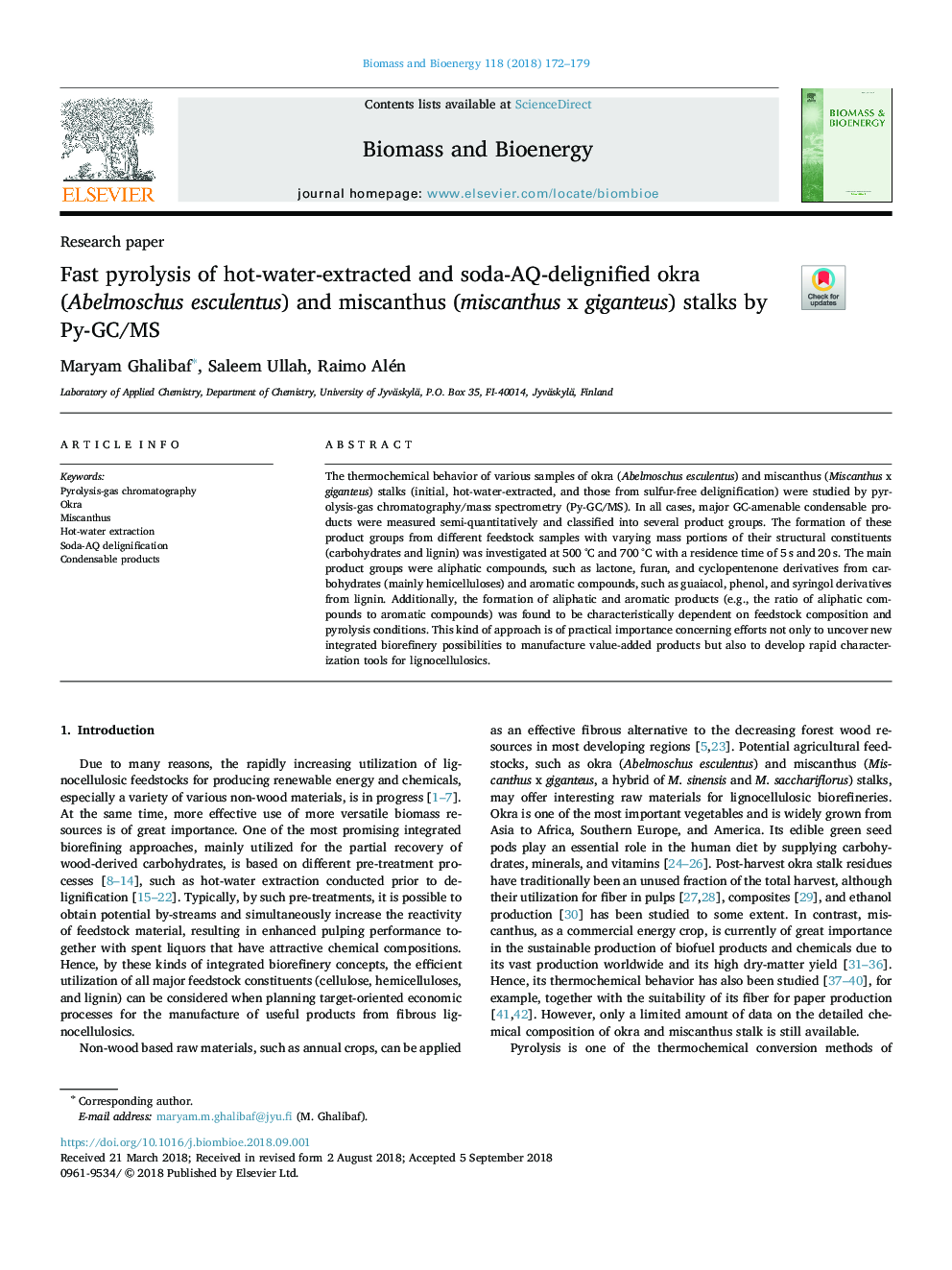| Article ID | Journal | Published Year | Pages | File Type |
|---|---|---|---|---|
| 9952679 | Biomass and Bioenergy | 2018 | 8 Pages |
Abstract
The thermochemical behavior of various samples of okra (Abelmoschus esculentus) and miscanthus (Miscanthus x giganteus) stalks (initial, hot-water-extracted, and those from sulfur-free delignification) were studied by pyrolysis-gas chromatography/mass spectrometry (Py-GC/MS). In all cases, major GC-amenable condensable products were measured semi-quantitatively and classified into several product groups. The formation of these product groups from different feedstock samples with varying mass portions of their structural constituents (carbohydrates and lignin) was investigated at 500â¯Â°C and 700â¯Â°C with a residence time of 5â¯s and 20â¯s. The main product groups were aliphatic compounds, such as lactone, furan, and cyclopentenone derivatives from carbohydrates (mainly hemicelluloses) and aromatic compounds, such as guaiacol, phenol, and syringol derivatives from lignin. Additionally, the formation of aliphatic and aromatic products (e.g., the ratio of aliphatic compounds to aromatic compounds) was found to be characteristically dependent on feedstock composition and pyrolysis conditions. This kind of approach is of practical importance concerning efforts not only to uncover new integrated biorefinery possibilities to manufacture value-added products but also to develop rapid characterization tools for lignocellulosics.
Related Topics
Physical Sciences and Engineering
Chemical Engineering
Process Chemistry and Technology
Authors
Maryam Ghalibaf, Saleem Ullah, Raimo Alén,
